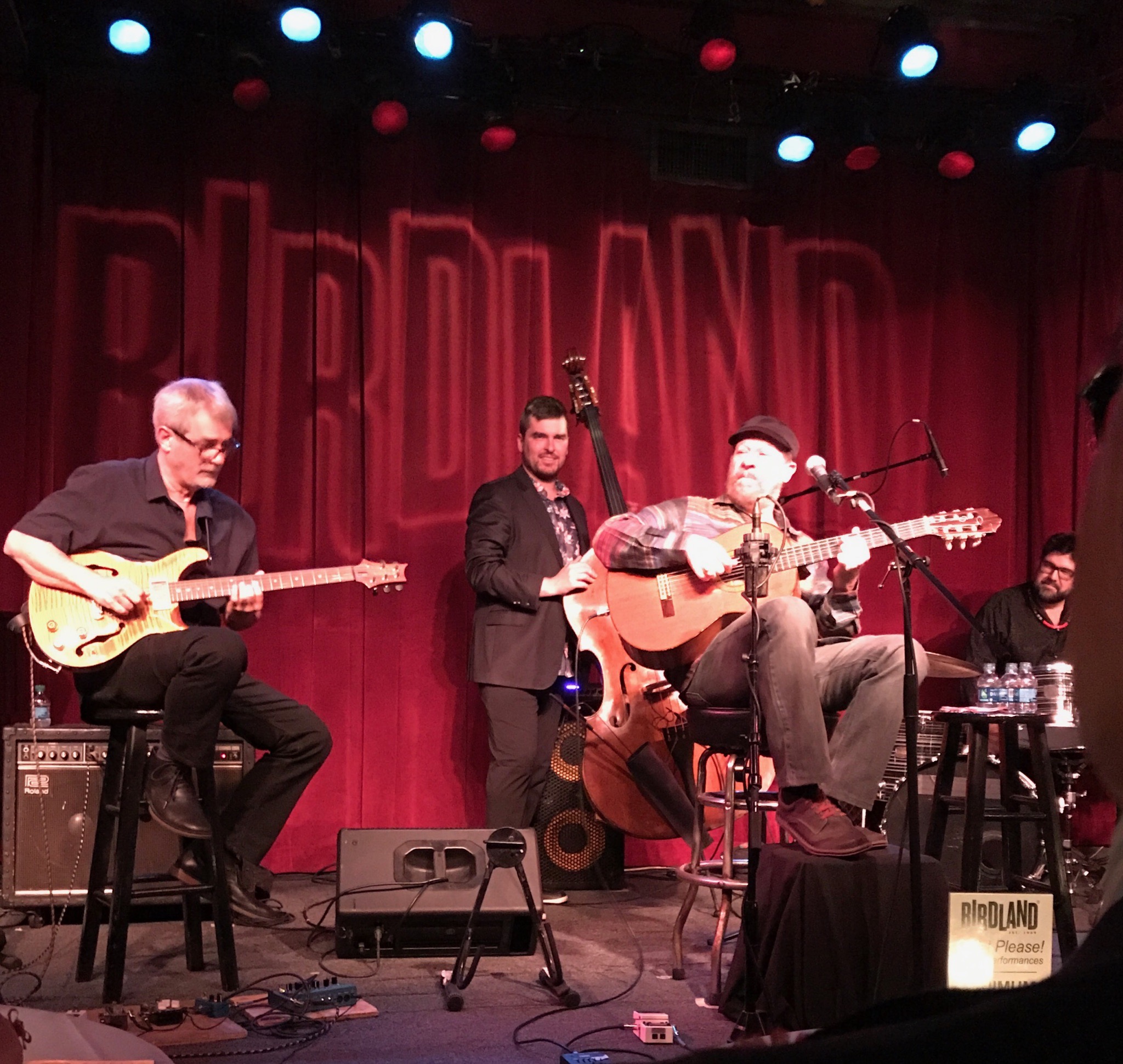When I saw João Bosco would be performing at the Birdland jazz club in Manhattan in 2017 – his first show in the US in about a decade – my wife and I had a flight booked from Milwaukee to New York that same day!
João Bosco is a former civil engineer turned guitarist/singer/songwriter/bandleader. He’s become one of the most important artists in Brazilian music over the past five or so decades, and for good reason.
As a guitarist he has an incredible knack for complex rhythms, and a unique “ginga:” the Brazilian equivalent of concepts like “groove” or “swing” that is somewhat difficult to qualify, but everyone knows when they hear it.
As a composer he has managed to pen many Brazilian MPB (música popular brasileira) standards like “O Ronco da Cuica,” “O Bêbado e a Equilibrista,” and “Coisa Feita” (we’ll talk more about that one later on.)
As a lyricist… I have no clue. It’s all Portuguese. But it’s probably worth a Google translation.
His specialty lies in the sub-genre of samba: partido alto, which is fairly distinct from other Brazilian styles. João Bosco’s approach to partido alto will be the focus of this lesson. Talk about esoteric.
Get the free PDF of this lesson sent to your inbox
Partido Alto
The partido alto style of samba developed in urban areas as a way to interpret traditional samba rhythms. It was designed to be played by smaller ensembles in a pop music context. Before jumping into the deep end with musical examples, it’ll be important to learn the partido alto rhythm that drives this style of samba. This is the rhythmic pulse that informs all the syncopation in the ensemble, from the instrumental and percussion parts to melodies.
Example 1 illustrates the basic partido alto. To get the hang of this, try tapping your foot on the quarter note while clapping the rhythm. When we apply this to fingerstyle guitar, you’ll typically be playing this pattern – and/or related rhythms – with the right hand fingers against a quarter note bass line played by the thumb.

To hear all of this in action, check out Bosco’s recordings of “Escadas da Penha” from his 1975 album Caça à Raposa.
“Escadas de Penha” – Caça à Raposa (1975)

This tune also features one of our favorite close voicings of the Am9 chord in which the 9th (B) and the minor 3rd (C) find themselves in the same octave. This creates some internal tension as a block chord, and a sense of melody as an arpeggio.
You’ll notice a cornerstone of this style is adding accents to two particular notes in partido alto: the “and” of beat one in the first measure and the “e” of beat one in the second measure. Just about every instrument in the ensemble will do this, from the percussion to a vocalist. Guitarists achieve this effect by grabbing the higher string on the accent, and sticking to the middle strings for the unaccented beats. This has the added bonus of mimicking an agogô, which is a set of two pitched bells that are used in Brazilian samba baterias and percussion ensembles.
“Holofotes” – Zona de Fronteira (1991)

“Holofotes” revolves around a great head-spinning riff. It’s a excellent example of how partido alto can be hinted at rather than explicitly played by any one instrument. While the groove is ambiguous at first, João helps us out by thumbing two big eighth notes in his bassline at the beginning of the bar. Later on, the drummer’s snare shed more light on the partido alto pulse as the tune progresses by targeting the “e” of beat two, and the “and” of beat four.
Get the free PDF of this lesson sent to your inbox
On the Up Side of Partido Alto
Our partido alto rhythm has siblings all over South and Central America as well as the Caribbean. These rhythms are typically refered to as “clave” (which means “key” in Spanish and Portuguese). While Cuban son or rumba claves, for example, are very different than Brazilian partido alto, the rhythms all serve roughly the same function in the music: they determine a common pattern of syncopation, as we found out earlier.
Not only that, clave rhythms can also be played in their converse. In case of partido alto, the basic version seen above has measure 1, which starts on a down beat (beat one) and measure 2, which starts on an up beat (the “e,” of beat one). We can play the converse by transposing measures 1 and 2, thereby beginning the pattern on an up beat, or the “up side.”

“Coisa Feita” and “Incompatibilidade de Genios” are two of Bosco’s signature tunes, and both happen to have their partido alto flipped to the “up side.”
“Coisa Feita” Comissão De Frente (1982)

Bosco’s famous tune “Coisa Feita” has become an MPB standard and features partido alto starting on the up beat. Again, we see the use of close intervals in the Csus2 and D7 chords. In both cases the C and D notes are voiced in the same octave.
“Incompatibilidade de Genios” – Galos de Briga (1976)


By now Bosco’s preference for chords with at least one close interval snuck in there is becoming apparent. Like the chord in “Escadas da Penha,” here we have an Am9 with the B and C notes in the same octave. This time, however, he arrives at an Am9 chord via the Cmaj7 drop 2 voicing over an A bass note.
Well, there you have it: a breakdown of the great João Bosco’s playing and the partido alto genre of samba. Not too shabby for an Irish guy from Wisconsin!
Boa sorte!
Get the free PDF of this lesson sent to your inbox
